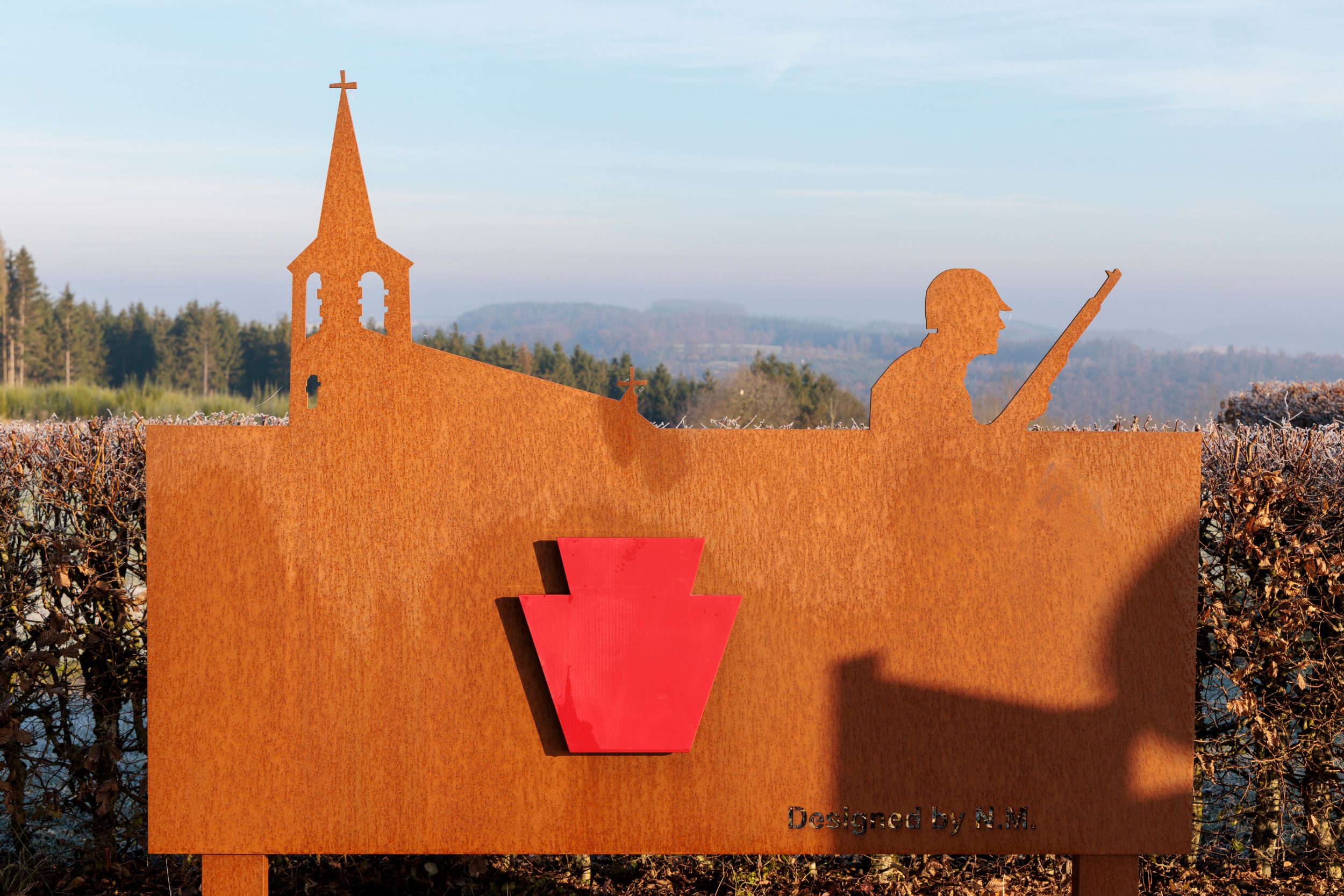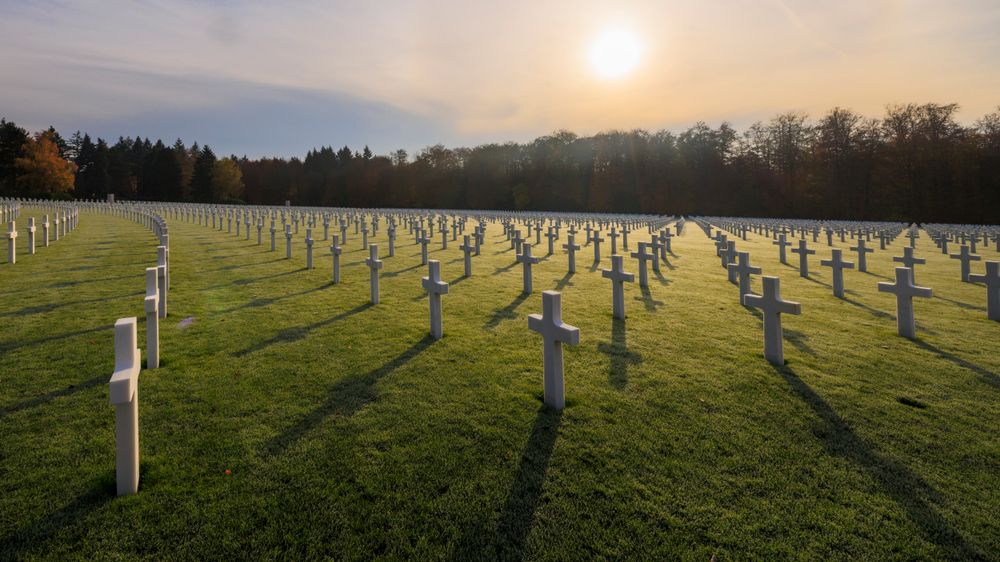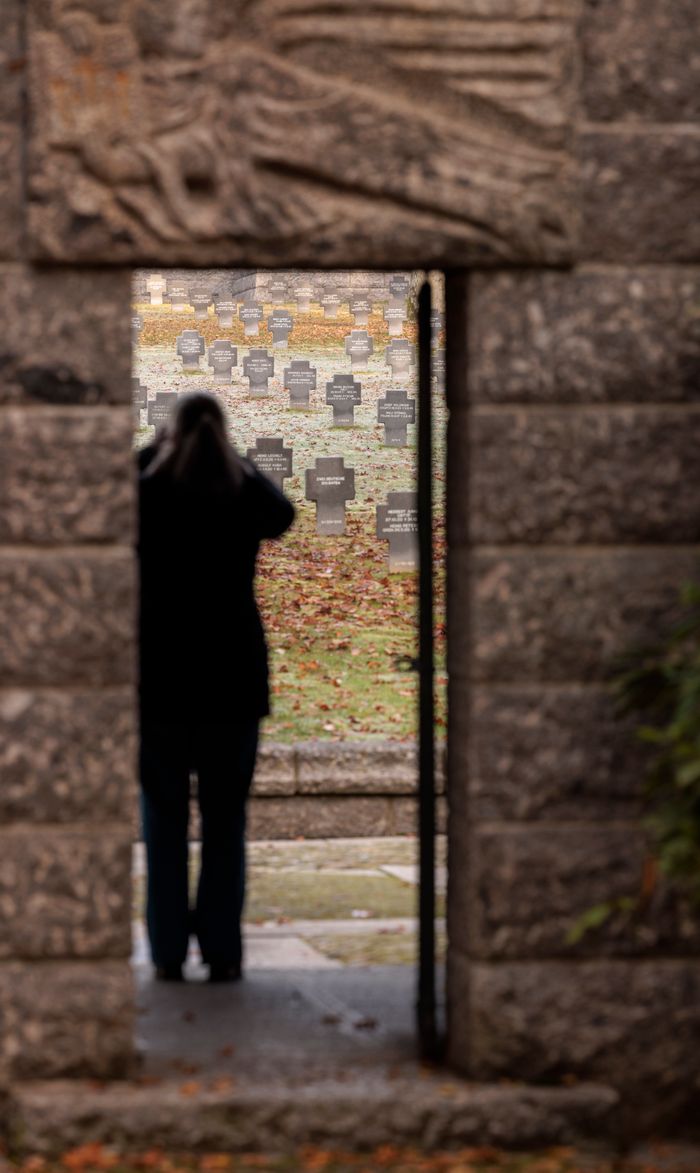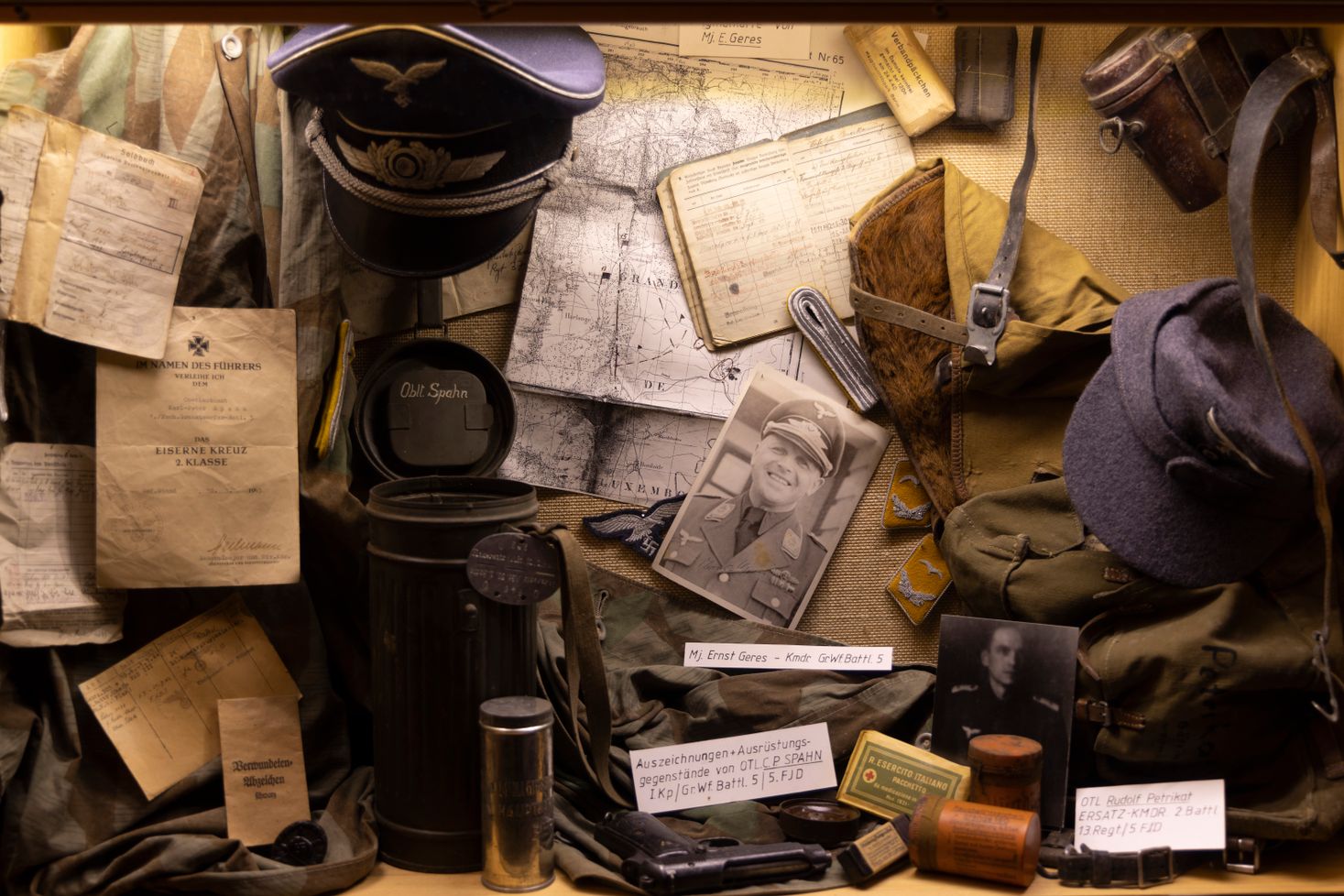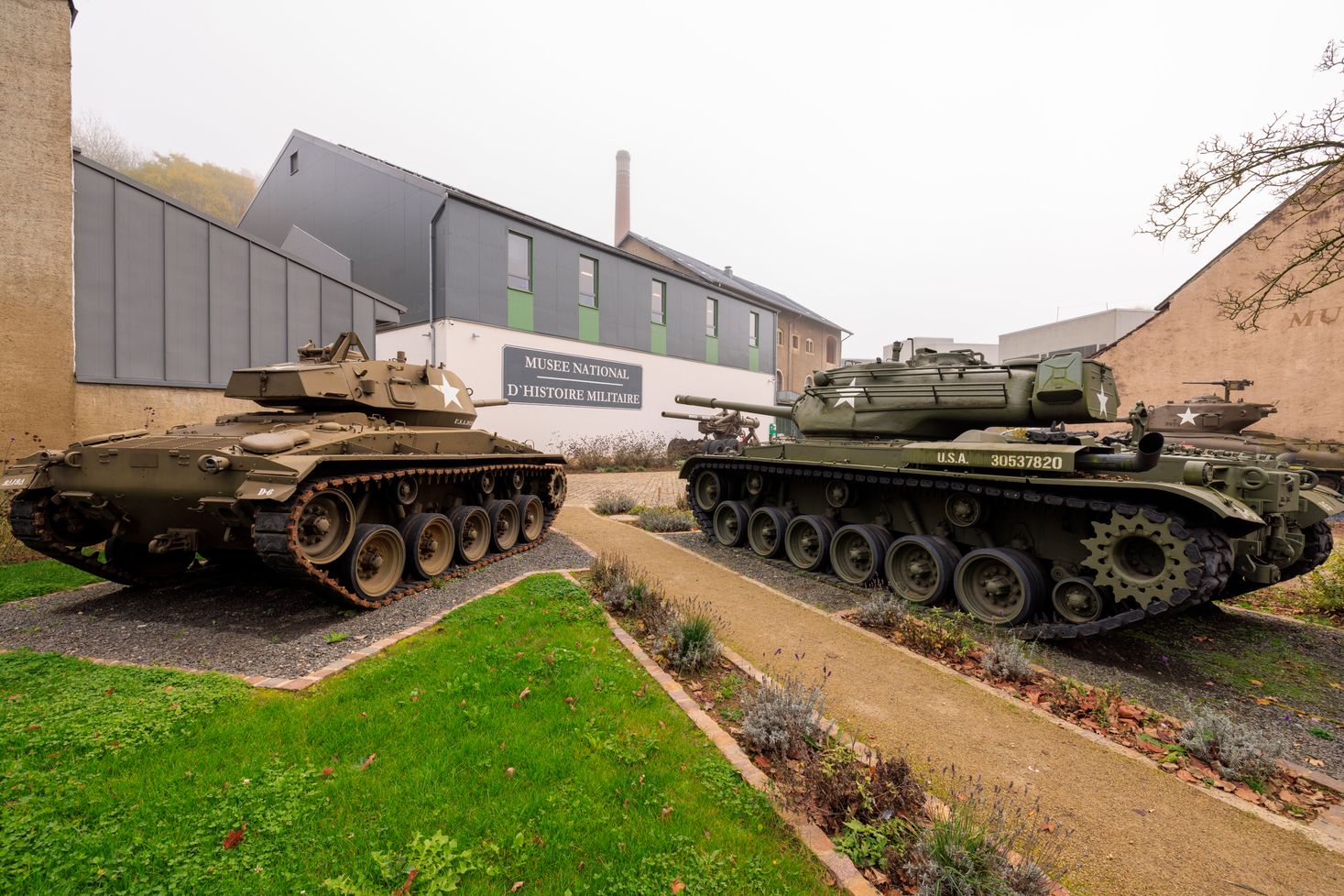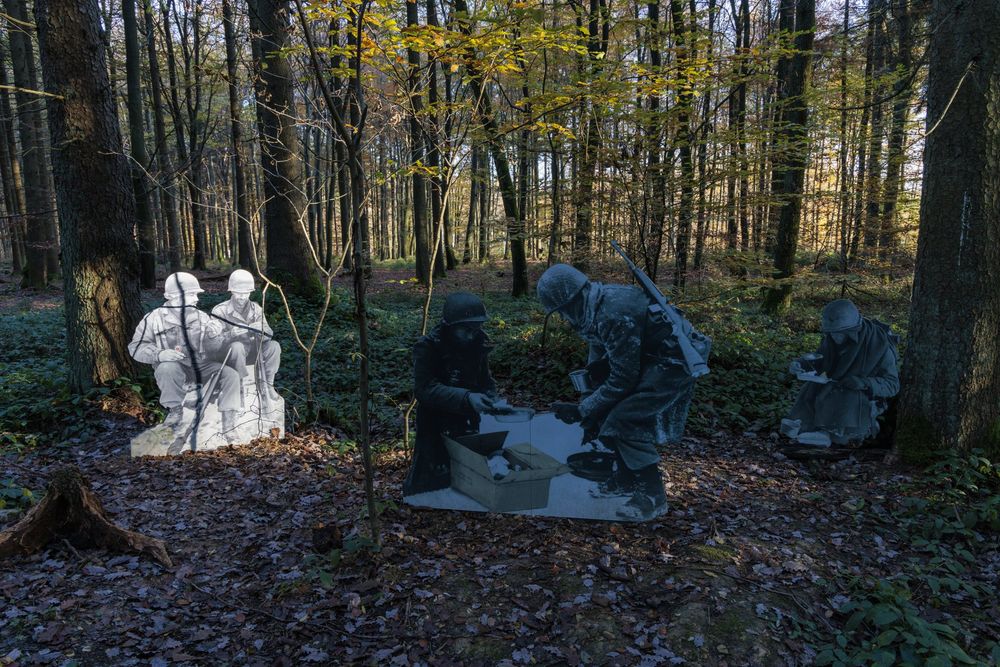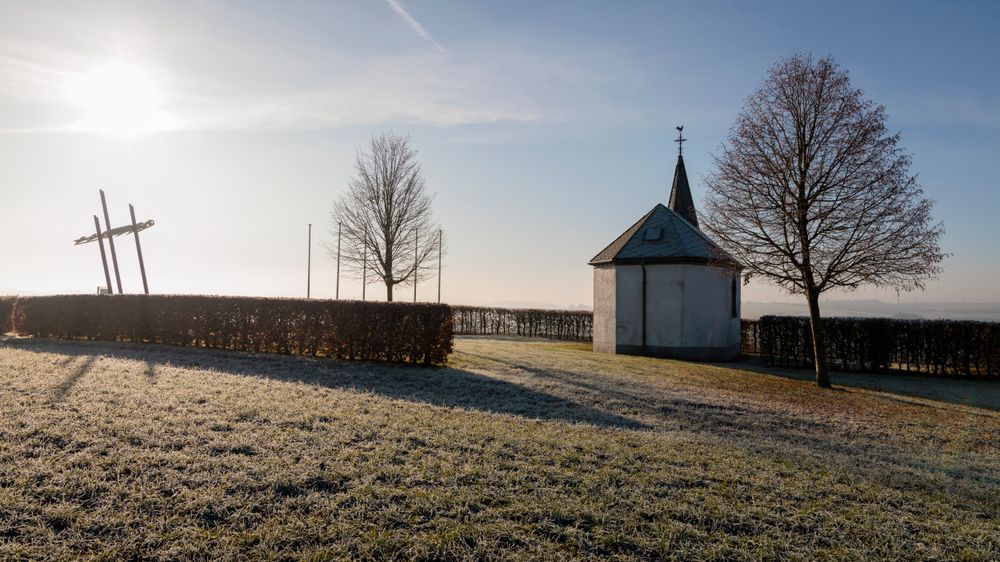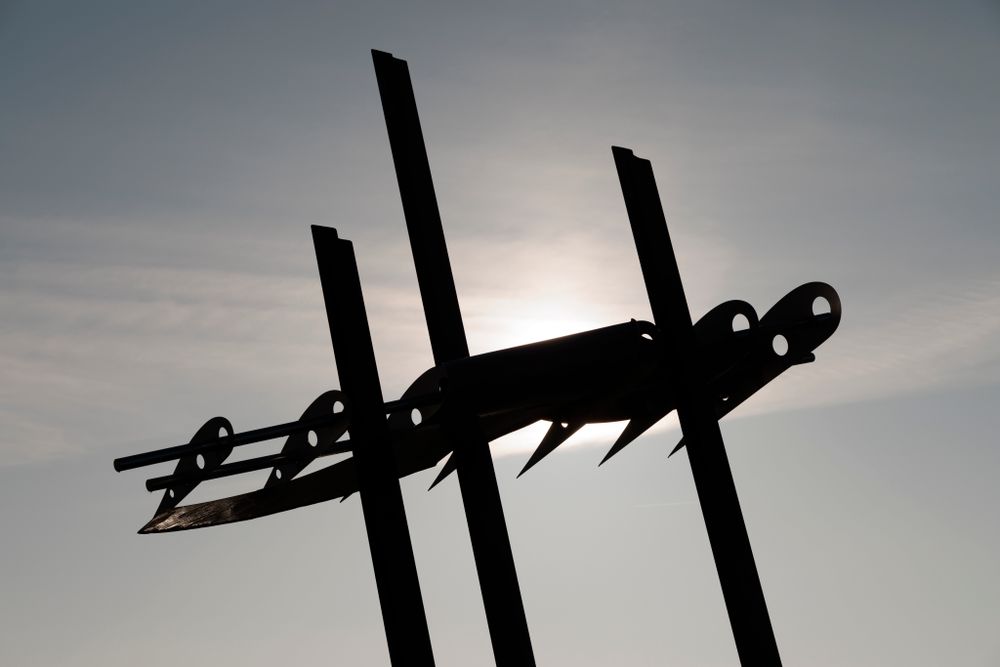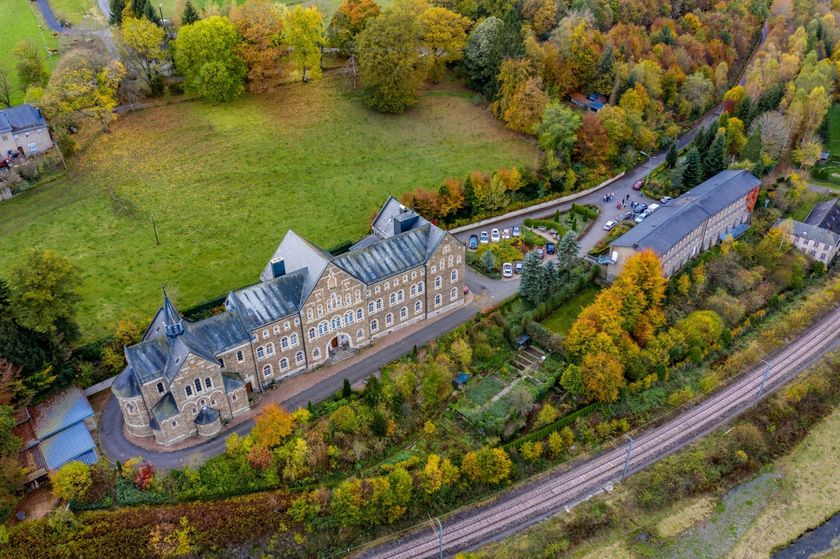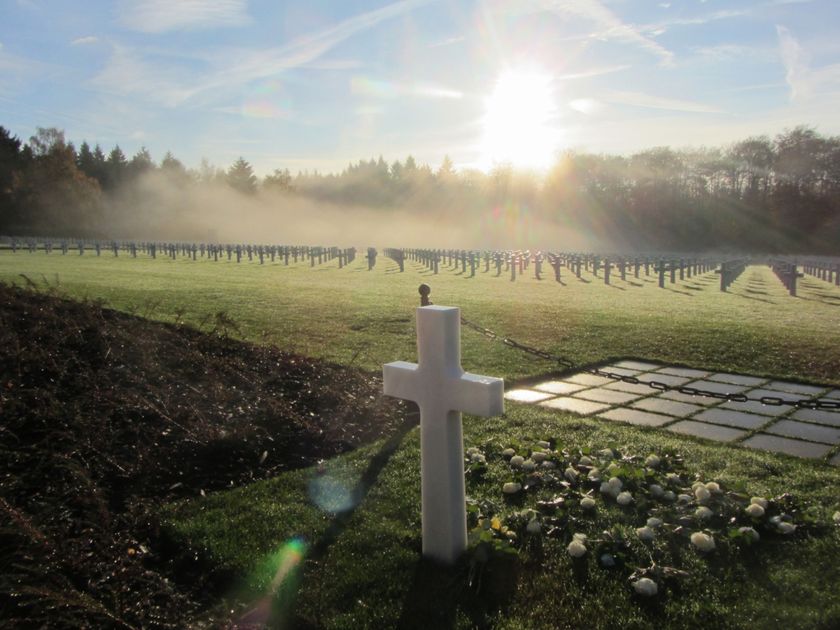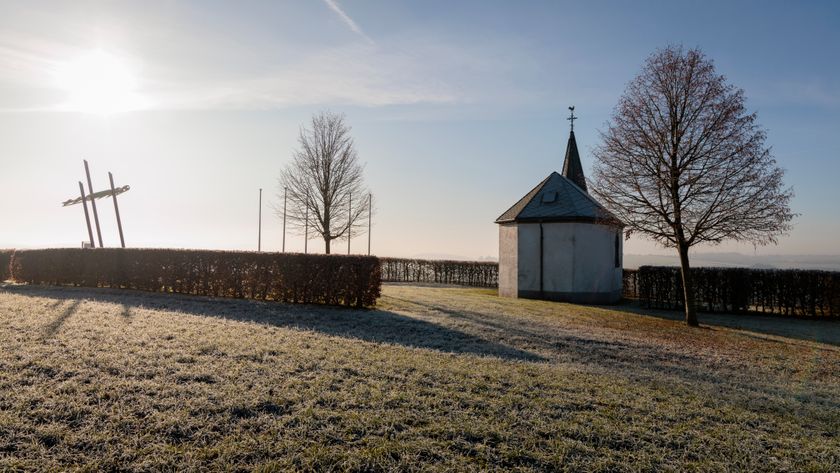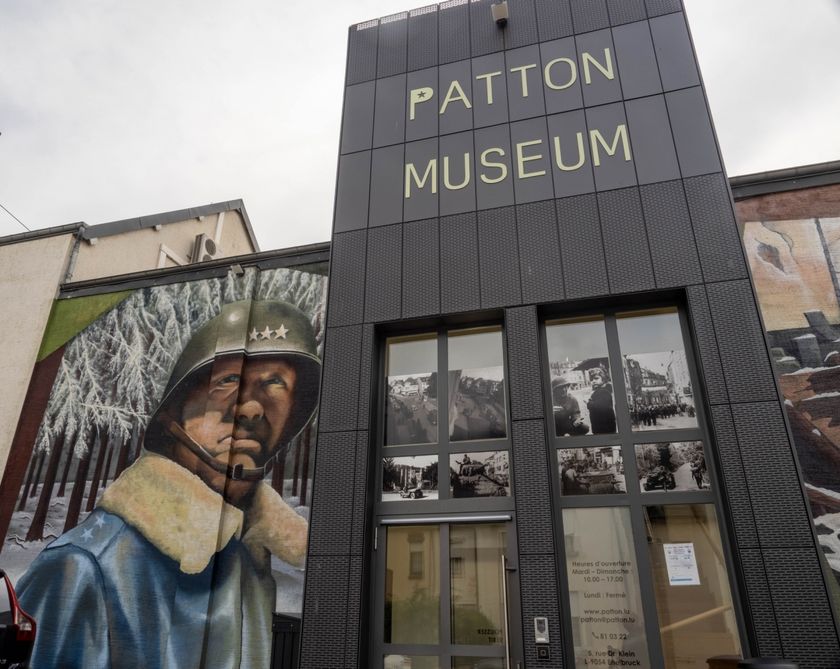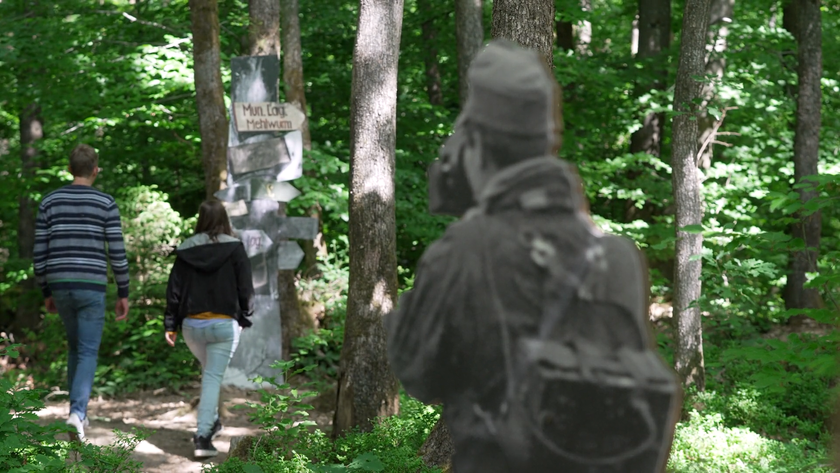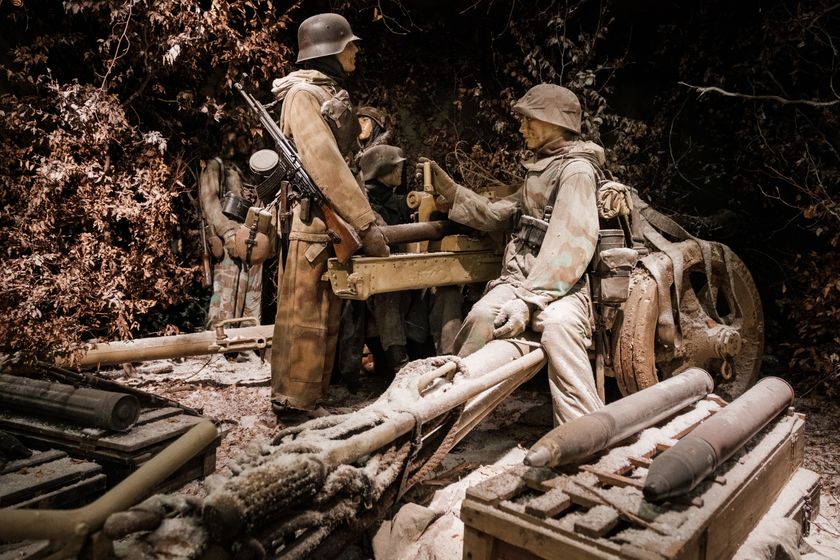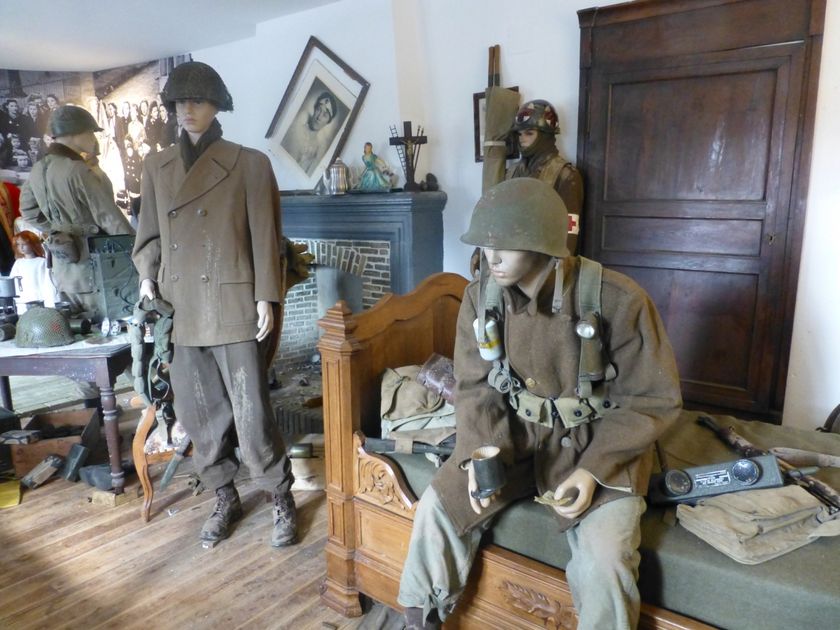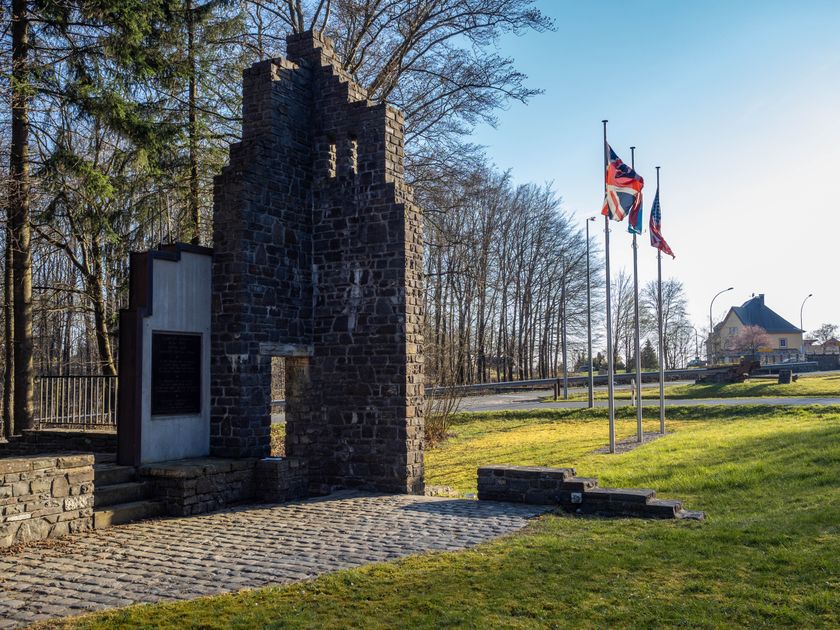Remember, understand, hope
Travelling to commemorate can be an intense experience, especially for a German who decides to visit several World War II memorials in one day. Facing what these moments elicit and experiencing these settings for oneself is a worthwhile endeavour. A personal take on the war.
On this November morning, the sun rises through a veil of clouds and bathes the entire landscape in a pink, milky light. It’s peaceful, magical. I’m standing at the entrance to the American Military Cemetery in Hamm. Today, I’m going to visit memorial sites. They are a reminder of the Battle of the Bulge fought during the last two years of the war: German soldiers fought against the Luxembourgish, Americans, French and British. A lot of blood was shed in the Ardennes, especially during the winter months of 1944 and 1945.
Over 5,000 American soldiers were laid to rest here in Hamm. The huge black gate is adorned with a golden eagle and laurel wreaths, symbols of bravery in ancient times. The grass is frostbitten yet perfectly manicured. A few autumn leaves lie scattered around the crosses. Everything is clean and orderly.
Impressive symmetry
Amidst the countless white marble headstones lies the chapel with its colossal red granite angel reaching into the sky. Inside, the ceiling features a magnificent, golden mosaic portraying the Holy Spirit in the shape of a peace dove. The steps to the monument are low, allowing me to comfortably gaze into the distance while walking. I look at the row of crosses. Some bear the Star of David, others a Christian cross. Depending on where you stand, the gravestones appear either aligned or offset. Two fountains with descending basins splash on the green promenades between the graves. They are decorated with bronze dolphins and tortoises, symbolising rebirth and eternal life. The sculptures, paths and gravestones create a remarkably symmetrical whole.
The carvings on the headstones are discreet, almost invisible on the pure white marble. Some names sound European, even German. Did a few American soldiers have German ancestors? I wonder. Later, the Military Museum is going to provide answers to some of my questions.
